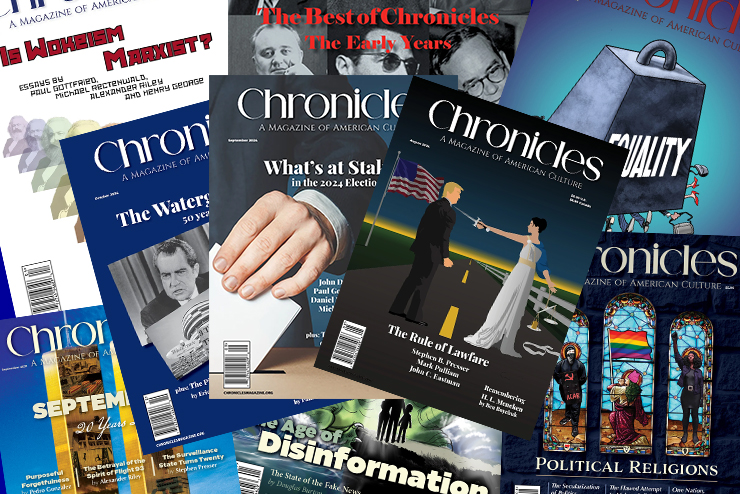In 1986, Paul Gottfried and Thomas Fleming coined the term “paleoconservative” to stress their movement’s continuity with an older, more authentic conservative tradition. What prompted this reassertion came in the form of an ideology—one that since the early 1980s has dominated the institutional power centers of the American right-wing: neoconservatism.
In 2005, National Review editor Rich Lowry declaimed against paleoconservatism arguing the identification with the “Old Right” was a deliberate ploy “to obscure the fact that it is a recent ideological creation of post-Cold War politics.” But the purging of the old right from the conservative mainstream began well before the end of the Cold War, arguably with the John Birch Society in the 1960s.
The tipping point, however, came in the early part of the Reagan administration when Melvin E. Bradford, a mild-mannered professor at the University of Dallas who was part of the Southern Agrarian political tradition, was nominated to become chairman the National Endowment for the Humanities. In response to his nomination, neoconservatives mounted what can only be described as a smear campaign, painting Bradford as an unreconstructed racist who spent his days pining for the antebellum South (read: slavery).
Nor did the humiliation end there. Throughout the latter half of the 1980s and ’90s, paleos were excoriated in major conservative publications as prudish, anti-Semitic, and perhaps worst of all—anti-American. Eventually, they were excluded altogether, when several paleoconservatives were fired from National Review within the span of a few years.
Paleos, for their part, were and remain vociferous critics of the neocons, but without the institutional power and resources of their opponents, they often found themselves confined to the pages of obscure opinion journals. Not anymore.
With the election of Donald J. Trump in 2016, paleoconservative thought has had a resurgence. Somewhat clunky, though it may have been at first, Trump and his base—what Sam Francis deemed the “Middle American Radicals”—have coalesced into a formidable political movement complete with a strong roster of paleo-aligned policy specialists (see, for example, Oren Cass and his rag-tag group of wonks at The American Compass).
A wise man once told me that, when it comes to the history of conservatism, there is nothing new under the sun. As the Bill Kristols and Liz Cheneys of the world flock to embrace Kamala Harris rather than condescend to the 80 million Americans whose livelihoods have been strip-mined by our ruling elite, the paleo- versus neo- debate is as relevant as ever. What divisions first prompted paleos to reassert the time-honored Burkean conservatism of their forbears? What ideas were so central that to surrender them to the neocons would be to surrender conservatism altogether?
Paleoconservatism is often reduced to a footnote in official biographies of the conservative movement. Serious treatments of their thought are few and far between. Paleos have labored for years as insurgents—moral lepers made to stand outside the gates of so-called “respectable conservatism.” But the tide is changing.
As a relative newcomer to the rich intellectual tradition of the old right, I’ve noticed that Chronicles has played an essential role in my maturation as a thinker and individual. This exposure furnished me with the necessary arguments and resources to defend my views including, as I am doing here, in print. In the otherwise staid wastelands of the American news media, Chronicles offers a vibrant and intellectually sophisticated range of perspectives that are and will continue to be essential in shaping the post-2016 world. If you are looking for a home on the right, I hope you will choose Chronicles, a publication that has become far more than just a magazine to me.

Leave a Reply